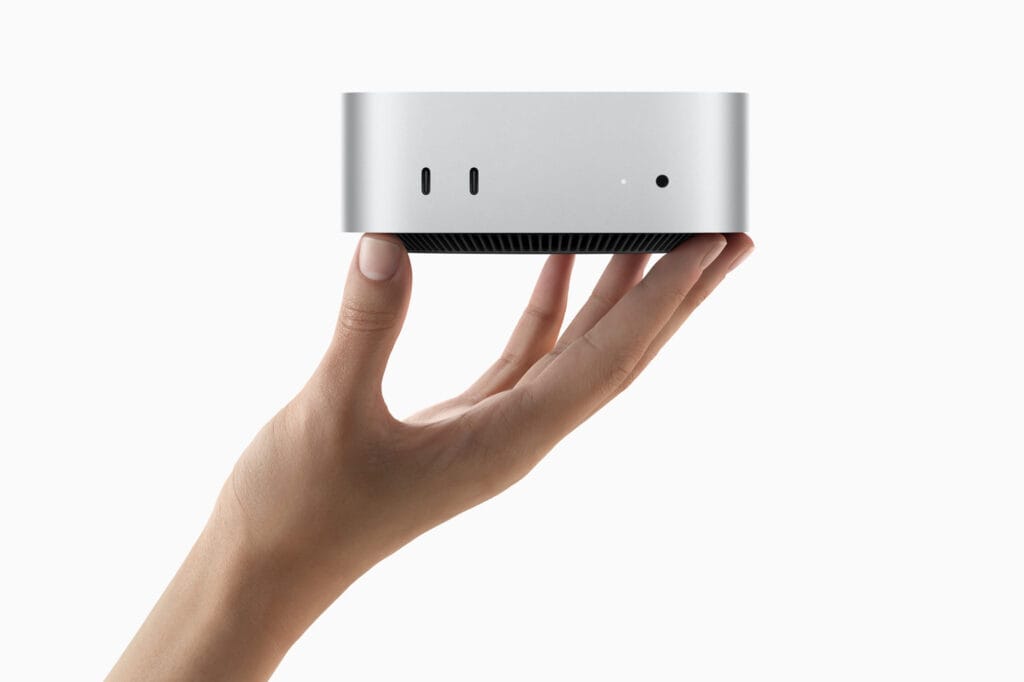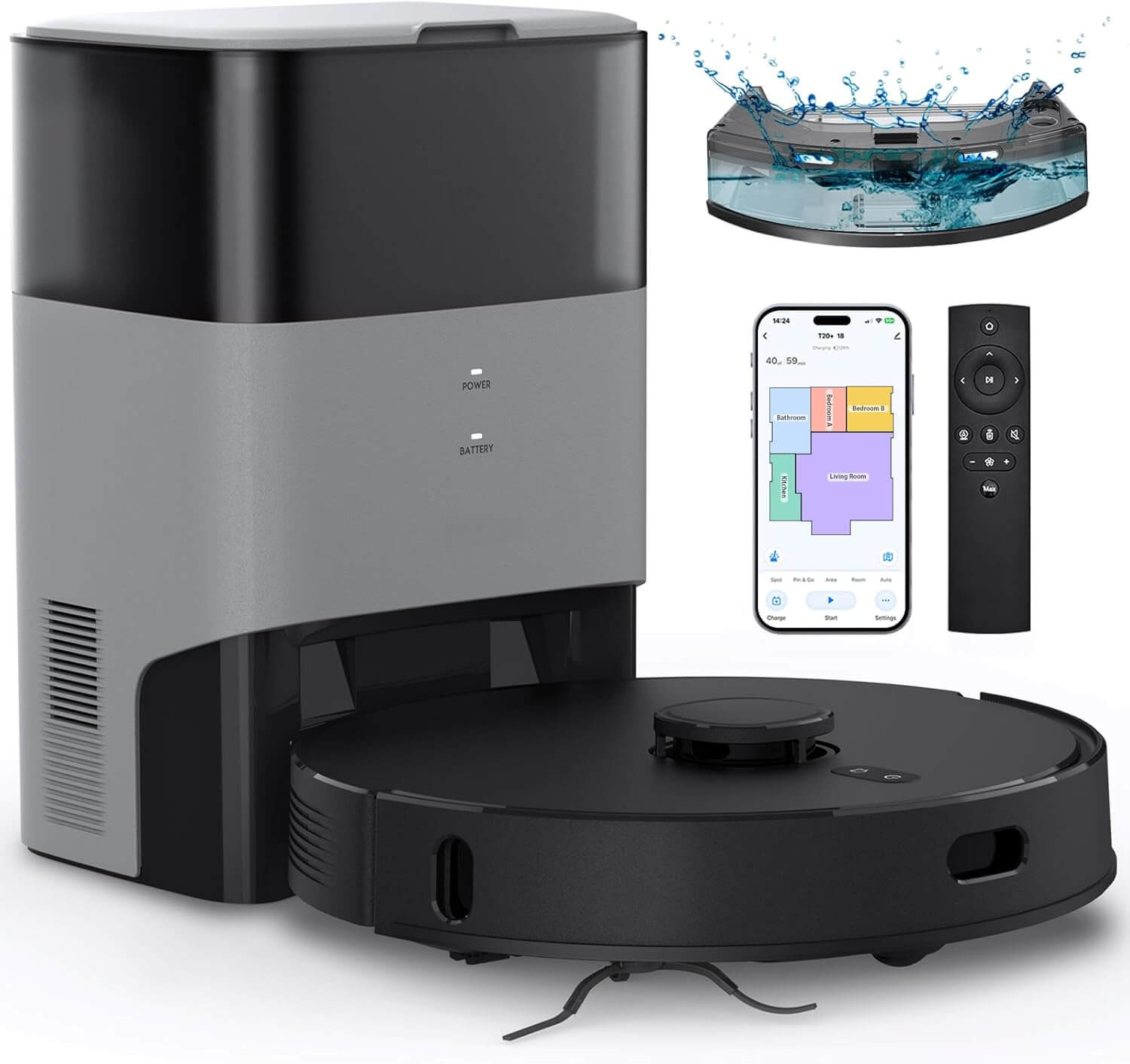Introduction to the Mac Mini
The Mac Mini, a compact desktop computer developed by Apple, has played a significant role in the company’s product lineup since its debut in 2005. Designed as an entry-level option for macOS users, the Mac Mini has consistently provided a balance of performance and affordability. Over the years, it has appealed to a diverse range of users, from casual consumers to professional creatives seeking an efficient desktop solution. The evolution of the Mac Mini reflects Apple’s commitment to innovation and adaptability within the computing landscape.
In recent years, the introduction of Apple’s own silicon chips, beginning with the M1, marked a dramatic shift in the Mac Mini’s capabilities. The M1 chip brought enhanced performance, energy efficiency, and seamless integration with macOS, allowing users to experience unprecedented levels of speed and responsiveness. As we now look toward the new Mac Mini featuring the M4 chip, this transition signifies not just an upgrade in hardware but also a step toward redefining the computing experience for Mac users.
The M4 chip builds upon the successes of its predecessor, the M1, and aims to deliver even greater performance enhancements and energy efficiency. This transition reflects Apple’s strategy of developing proprietary chips suited to the specific requirements of their devices, fostering a more cohesive ecosystem. As the demand for powerful, compact desktop computers continues to rise, the introduction of the Mac Mini with the M4 chip invites users to reevaluate their current setups and consider the potential benefits of upgrading.
Overall, understanding the historical context and significance of the Mac Mini, along with its transition from the M1 to the M4 chip, sets the stage for a detailed analysis of whether this latest iteration is indeed worth the investment for both existing and new Mac users.
Overview of the M4 Chip
The M4 chip represents a significant advancement in Apple’s custom silicon lineup, building on the foundation laid by its predecessor, the M1 chip. One of the key enhancements of the M4 chip is its architecture, which adopts a more refined system-on-a-chip (SoC) design. This architecture allows for improved integration between the CPU, GPU, and neural engine, enabling faster communication and processing capabilities. With this evolution, Apple has focused on increasing performance while maintaining energy efficiency, making the M4 chip ideal for a wide range of applications.
In terms of performance improvements, the M4 chip boasts a higher core count and enhanced clock speeds, enabling it to manage demanding tasks with greater ease. This results in quicker application launches, smoother multitasking, and improved performance in high-performance computing scenarios. Additionally, the M4 chip features an advanced 5-nanometer process technology, contributing to its efficiency. This smaller fabrication process not only boosts performance but also reduces power consumption, making the Mac Mini more energy-efficient without sacrificing output.
Graphical enhancements are another crucial aspect where the M4 chip shines. Featuring a more powerful GPU, the M4 supports advanced graphics features such as real-time ray tracing and improved rendering capabilities. This is particularly advantageous for users engaged in tasks like video editing, 3D rendering, and gaming. By enhancing graphical performance, the M4 chip positions the Mac Mini as a competitive option for creative professionals and gamers alike.
Overall, the M4 chip signifies a leap forward in technology, providing substantial upgrades over the M1. The combination of increased performance, energy efficiency, and superior graphical capabilities positions the Mac Mini with the M4 chip as a compelling choice for those considering an upgrade.
Comparing M1 and M4 Chips
The introduction of Apple’s M4 chip marks a significant evolution in the company’s silicon technology, especially when compared to its predecessor, the M1 chip. Both chips are designed to maximize performance and efficiency; however, the M4 chip has showcased substantial advancements across several critical areas, enhancing overall user experience.
In terms of CPU performance, the M4 chip features an improved architecture that allows for a higher number of cores compared to the M1. This translates into faster processing speeds for multitasking and demanding applications. While the M1 chip already set a high benchmark, the M4 enhances the capabilities further, making it an ideal choice for professionals who rely on software requiring substantial computational power. The data handling efficiency is notably improved, which plays a crucial role in tasks such as video editing and programming.
GPU capabilities have also seen impressive upgrades with the M4 chip. It offers better graphics processing, enabling smoother performance in graphics-intensive applications and gaming. The enhanced GPU architecture provides more cores, which contributes to higher frame rates and improved rendering quality. This advancement is particularly relevant for creative professionals who use software that demands high-resolution graphics and real-time rendering.
When it comes to memory management, the M4 chip supports a larger RAM capacity, which allows for better handling of concurrent workloads. This improvement significantly enhances the overall efficiency of the system, providing users with a seamless experience even when running multiple applications simultaneously. Users can expect quicker load times and a reduction in latency, further enriching their daily computing tasks.
Lastly, the processing speed for everyday tasks has been optimized with the M4 chip. Routine operations such as web browsing, document editing, and media consumption benefit from these enhancements, allowing for a more responsive and fluid user experience. The improvements in both performance and efficiency with the M4 chip highlight its potential advantages over the M1, particularly for users looking for a more robust computing experience.
Is the New Mac Mini Value for Money?
The introduction of the new Mac Mini equipped with the M4 chip has generated significant interest within the tech community, prompting discussions around its price point and performance enhancements. Apple has positioned this model as an affordable option within its lineup, but the question remains: does the cost reflect its value? As technology enthusiasts evaluate their options, it is essential to analyze not just the new features but also how these enhancements contribute to the overall user experience.
Pricing for the Mac Mini with M4 chip starts relatively low in comparison to other Apple models, such as the MacBook Air and MacBook Pro. This entry-level price may initially seem appealing, especially when considering the powerful performance attributed to the M4 chip, which promises significant advancements in processing speed and graphics capabilities. However, when assessing its value proposition, one must consider the target audience. Casual users may find the M4’s capabilities overkill for basic tasks, while professionals demanding intensive workflows might appreciate the performance improvements and deem the investment worthwhile.
Moreover, a comparison with competitors such as Dell and HP reveals that while Apple products often carry a premium price, they generally command a strong resale value. This attribute adds a layer of financial justification for some customers who strategically navigate their tech investments. However, the question of long-term value also arises; will the new Mac Mini remain relevant as software demands evolve? If performance upgrades translate into longer product lifespans and better compatibility with future applications, the cost may indeed justify the investment.
Ultimately, evaluating whether the new Mac Mini is value for money requires careful consideration of personal needs and usage patterns. While the M4 chip delivers remarkable capabilities, the decision to upgrade should be based on individual requirements and the specific tasks users anticipate tackling with the device.
Current Pricing and Availability
The new Mac Mini equipped with the M4 chip has garnered considerable interest since its release, prompting potential buyers to evaluate its pricing and availability. The base model, featuring 8GB of unified memory and a 256GB SSD, is priced at approximately $699. However, while this entry-level configuration offers a solid experience for general use, many users may find the need for more storage or memory, prompting an upgrade to configurations with increased specifications. For instance, an upgrade to 16GB of RAM and a 512GB SSD typically raises the price to around $899. Additionally, the ultimate variant with a 2TB SSD can reach upwards of $1,599, enabling power users to maximize performance.
Availability of the Mac Mini with M4 chip tends to fluctuate based on demand and supply chain dynamics. Major retailers such as Apple Store, Best Buy, and Amazon provide various options for purchasing the device, including direct buy and financing plans. However, it’s essential to remain cautious of stock levels, particularly during promotional periods or the holiday season when demand may surge. Additionally, certain configurations, especially those with upgraded specifications, may experience delays in shipping or may only be available through select distributors. Therefore, prospective buyers should verify the availability of their desired model, as well as any potential shipping dates.
In conclusion, understanding the current pricing and availability of the Mac Mini with M4 chip not only helps consumers make informed decisions but also highlights the importance of factoring in configurations based on individual needs. Whether it’s choosing between the entry-level option or a high-storage variant, being aware of market trends will significantly impact the purchasing experience.
Advantages of the Mac Mini M4
The introduction of the Mac Mini with the M4 chip has brought forth several compelling advantages that enhance its overall usability and appeal. One of the primary benefits of the M4 chip is its enhanced performance capabilities. Apple’s M4 chip boasts a powerful architecture that allows for improved processing speed and efficiency. Users often report significant performance enhancements, particularly in tasks that require extensive computing power, such as video editing, graphic design, and software development. This performance boost makes it a suitable choice for both casual users and professionals alike.
In addition to performance, the Mac Mini M4 offers impressive graphics capabilities. The enhanced GPU integrated within the M4 chip enables high-quality graphics rendering, making it an excellent choice for gamers and creatives seeking to produce visually stunning content. The device supports high-resolution displays, providing an immersive experience whether for gaming, video production, or multitasking across multiple applications.
Another significant advantage is energy efficiency. The M4 chip’s design prioritizes lower power consumption without sacrificing performance, which translates to reduced energy bills and a smaller carbon footprint. This attribute makes the Mac Mini M4 an environmentally friendly option for those keen on sustainability.
Furthermore, versatility is a key feature of the Mac Mini M4. It can seamlessly fit into diverse environments, from home office setups to creative studios. The compact design allows users to integrate it effortlessly into their workspace, while the wide range of ports facilitates connectivity to various peripherals and displays. These features collectively contribute to a flexible and adaptable computing experience, appealing to a broad spectrum of users.
Overall, the Mac Mini with the M4 chip offers a combination of enhanced performance, superior graphics, energy efficiency, and versatility, making it a noteworthy contender for those considering an upgrade.
Cons of the Mac Mini M4
Despite the significant advancements brought forth by the new Mac Mini M4, potential buyers should consider several drawbacks before making an upgrade. One of the most notable concerns is related to hardware limitations, particularly in the context of RAM and storage options. While the M4 chip offers remarkable performance capabilities, the base model of the Mac Mini comes with a limited amount of RAM, which may not meet the demands of users requiring heavy multitasking or resource-intensive applications. Users aiming for a more robust experience will need to invest in higher RAM configurations, which can drive the overall cost up.
Another aspect to contemplate is the storage constraints. The Mac Mini M4 provides solid-state drive (SSD) options, which are significantly faster than traditional hard drives. However, the base storage capacity is relatively modest, especially when compared to the storage needs of professionals dealing with large files, such as video editors or graphic designers. This limitation may compel users to either opt for higher-cost configurations or external storage solutions, which can complicate the overall setup.
Additionally, compatibility issues may arise, particularly for users with pre-existing peripherals or software. While Apple has a reputation for ensuring compatibility across its ecosystem, there may be instances where older devices or applications do not perform well with the new M4 architecture. This could result in frustrating user experiences or the need for additional purchases to replace outdated technology.
Lastly, the price of the Mac Mini M4, particularly when adding necessary upgrades, can be a consideration for many consumers. The perceived value may not align with the budget of every potential customer, especially when accounting for the rapid pace of technological advancements and the availability of alternative options in the market. These factors warrant careful contemplation for those considering an upgrade to the new Mac Mini M4.
User Experience: Real-World Performance
The new Mac Mini equipped with the M4 chip has garnered significant attention, particularly from users seeking an improvement in overall performance across a variety of tasks. User reviews reflect a generally positive sentiment regarding the real-world capabilities of this device, especially when it comes to gaming, content creation, and standard productivity tasks.
In gaming scenarios, many users have noted that the enhanced graphics performance of the M4 chip has transformed their experience. Titles that previously struggled to maintain frame rates are now running smoothly on the new Mac Mini. Gamers appreciate the device’s ability to handle high-resolution settings without severe lag, which represents a marked improvement over older Mac Mini models. As a result, the M4 chip’s architecture appears to deliver an impressive gaming experience, making it a viable option for casual gamers and enthusiasts alike.
For content creators, the Mac Mini with M4 chip demonstrates notable efficiency, particularly in tasks like video editing, photo manipulation, and graphic design. Users report quicker render times and smoother playback, which significantly enhances productivity during demanding projects. The robustness of the M4 chip enables artists and designers to utilize resource-intensive software without performance bottlenecks. This efficiency allows for more creativity and less frustration, highlighting how the advancements in processing power benefit those in creative fields.
Standard productivity tasks, including web browsing, document editing, and multitasking, also show improvements. Users have observed that the Mac Mini with the M4 chip handles multiple applications with ease, providing a seamless experience whether working on spreadsheets or streaming content. Overall, the upgrades provided by the M4 chip translate into enhanced everyday usability, making the new Mac Mini a compelling choice for a variety of users.
Conclusion: Should You Upgrade?
In evaluating whether to upgrade to the new Mac Mini equipped with the M4 chip, it is essential to consider several factors, including performance enhancements, user requirements, and budget constraints. The M4 chip introduces significant improvements in processing power and energy efficiency, making this device an attractive option for both casual users and professionals. Enhanced graphics capabilities and faster computation times elevate the overall user experience, particularly for tasks that demand high processing capabilities such as video editing, gaming, or software development.
For existing Mac Mini users contemplating an upgrade, the decision may hinge on how they utilize their current device. If the tasks performed are basic, such as web browsing or word processing, the incremental gains from the M4 chip may not justify the investment. However, for users who engage in more demanding applications or require a machine that can handle multitasking seamlessly, the advancements brought by the M4 chip could represent a worthwhile upgrade.
Moreover, the pricing strategy associated with the new Mac Mini is another crucial consideration. While premium devices often come at a higher cost, the M4 model offers a competitive value proposition, especially given its superior performance metrics compared to its predecessors. Users must weigh their budget against the potential productivity gains that the new features may offer.
Ultimately, whether to upgrade to the new Mac Mini with the M4 chip depends on the individual user’s needs and usage patterns. If performance and future-proofing are priorities, this upgrade certainly warrants serious consideration. However, for users whose requirements are adequately met by their current setup, waiting for subsequent iterations may be a more prudent approach.






















